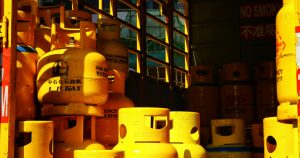In industries that handle hazardous liquids—such as chemicals, fuels, or corrosive substances—transfer systems are the lifeline of daily operations. They move essential materials from storage to process with precision and reliability. Yet even the most well-maintained system can experience a failure. A worn seal, a misaligned hose, or a momentary lapse in operator attention can trigger an event with serious safety, environmental, and financial consequences.
The question isn’t just if something could go wrong—but whether your system is designed to handle it when it does.
This is where fail-safe design, proactive maintenance, and intelligent monitoring make the difference between a controlled incident and a full-blown emergency.
When Transfer Systems Go Wrong: Real-World Scenarios
Failures in liquid transfer systems are rare but have a high impact. They tend to happen fast, often without warning, and the costs go far beyond equipment damage. Let’s explore a few typical failure scenarios.
1. Seal Failure or Hose Degradation
Seals, gaskets, and hoses are among the most stressed components in any transfer system. Over time, exposure to aggressive chemicals or extreme temperatures can degrade them. A single cracked seal or perished hose can release litres of hazardous liquid within seconds.
Potential consequences:
- Environmental contamination and expensive cleanup operations
- Production downtime and wasted raw materials
- Operator exposure to harmful substances
- Regulatory reporting, fines, or reputational harm
How to prevent it:
Regular inspection and replacement cycles are essential, but so is the design of the equipment. LiquiSafe transfer systems use chemically resistant materials and sealed, leak-proof couplings to minimise the risk of escape, even under pressure or misalignment.
2. Transferring the Wrong Chemical
Human error remains one of the biggest causes of process incidents. Connecting a transfer line to the wrong tank—or moving an incompatible chemical—can trigger dangerous reactions, vapour release, or product contamination.
Example: A delivery driver connects a hose to the wrong inlet on a multi-tank system. Within moments, two incompatible chemicals begin to mix, producing toxic gas.
How to prevent it:
Designing for human factors is key. LiquiSafe systems can incorporate coded connectors, colour-coded hoses, and digital flow monitoring that verifies chemical identity before transfer begins. These safeguards make it almost impossible to start the wrong transfer sequence.
3. Overfilling or Backflow
A common issue in manual transfer setups is a lack of feedback. If the receiving vessel fills faster than expected—or a valve fails to close—overpressure can cause backflow or spillage.
Potential consequences:
- Tank rupture or overflow
- Release of volatile or flammable liquid
- Equipment damage from backpressure
How to prevent it:
LiquiSafe’s innovative flow monitoring systems detect abnormal pressure or fill rates in real time. Automatic shutoff valves engage instantly when unsafe thresholds are reached, cutting off flow before overflow occurs.
4. Inadequate Operator Training
Even the best equipment can’t compensate for insufficient training. An untrained or rushed operator may skip pre-transfer checks, open valves in the wrong order, or misinterpret system warnings.
Consequences:
- Increased risk of spills and exposure
- Slower response during emergencies
- Potential injury or long-term health issues
How to prevent it:
Design can simplify safe operation. LiquiSafe systems are built with intuitive controls, clear indicators, and fail-safe logic that prioritise safety. Combined with proper operator training and visual procedure guides, they help ensure every transfer happens safely and consistently.
Designing for Failure: The “Fail-Safe” Philosophy
The concept of “fail-safe” design means that if something does fail, it does so in a way that minimises harm. It’s not about assuming perfection; it’s about accepting that things will go wrong—and preparing accordingly.
In chemical handling, this preparation is achieved through redundancy, automation, and control intelligence.
1. Redundancy Built In
Critical systems should never rely on a single point of failure. LiquiSafe designs include:
- Dual containment layers around hoses and connectors
- Secondary shutoff valves for isolation if a primary valve fails
- Pressure relief mechanisms to prevent rupture under abnormal loads
These redundancies mean that even if one component fails, another is ready to contain or isolate the problem.
2. Smart Monitoring and Real-Time Alerts
The most effective way to manage risk is to identify it early. LiquiSafe integrates IoT-enabled sensors that continuously monitor flow rate, pressure, and temperature. When irregularities are detected, the system sends instant alerts or initiates an automatic shutdown.
This real-time visibility enables operators to take action before incidents escalate. Data logs also aid in predictive maintenance, allowing the identification of components that show signs of wear before they fail.
3. Automatic Emergency Shutdown
Manual reaction time is often too slow during a leak or overpressure event. That’s why LiquiSafe systems incorporate automatic emergency shutdown (ESD) capabilities. When a critical fault is detected, valves close and pumps stop immediately—limiting the amount of fluid released and protecting personnel and property.
The Cost of Not Preparing
The financial and reputational damage from a single transfer failure can be staggering. Cleanup costs for a moderate chemical spill can exceed tens of thousands of pounds, not to mention lost production time, regulatory penalties, and insurance impacts.
Beyond costs, the human and environmental consequences are often far greater. Exposure to hazardous materials can cause serious injury, while contamination incidents can have lasting effects on local ecosystems and communities for years.
Designing for failure isn’t an expense—it’s an investment in resilience, compliance, and peace of mind.
How LiquiSafe Embodies “Fail-Safe” Thinking
At LiquiSafe, every product and system is designed around a simple truth: safety shouldn’t depend on luck.
Our transfer solutions combine engineering excellence with real-world practicality:
- Sealed, spill-proof couplings prevent leaks during connection or disconnection.
- Smart sensors and flow controls detect irregularities before they become incidents.
- Automated ESD systems isolate faults instantly, minimising spill volume and exposure.
- Modular containment options offer scalable redundancy to suit risk profiles.
- Operator-friendly interfaces make correct operation the easy, default choice.
We also work closely with customers to conduct risk assessments, ensuring systems are tailored to their specific processes, chemical types, and site conditions. Because no two facilities are identical, true fail-safe operations come from understanding each one in detail.
Turning Lessons Into Leadership
Incidents—whether near misses or actual spills—shouldn’t be ignored; they’re opportunities to improve. Reviewing system performance, updating training, and upgrading to more innovative equipment are proactive steps that strengthen safety culture.
The most forward-thinking operators don’t just comply with standards; they anticipate risks. They ask not, “Could this fail?” but “When it does, how will we respond?”
With LiquiSafe’s technology and design philosophy, the answer is clear: you’ll already be ready.
Conclusion
No system is entirely immune to failure. However, with thoughtful design, robust materials, intelligent monitoring, and automatic safeguards, you can ensure that even in the event of the unexpected, your facility remains safe, compliant, and operational.
A LiquiSafe transfer system doesn’t just move liquids—it moves your operation toward a safer, brighter, and more resilient future.


